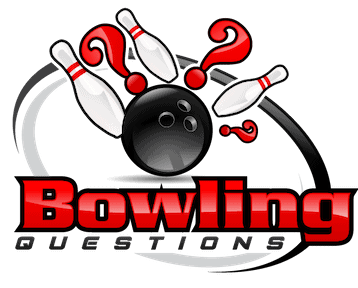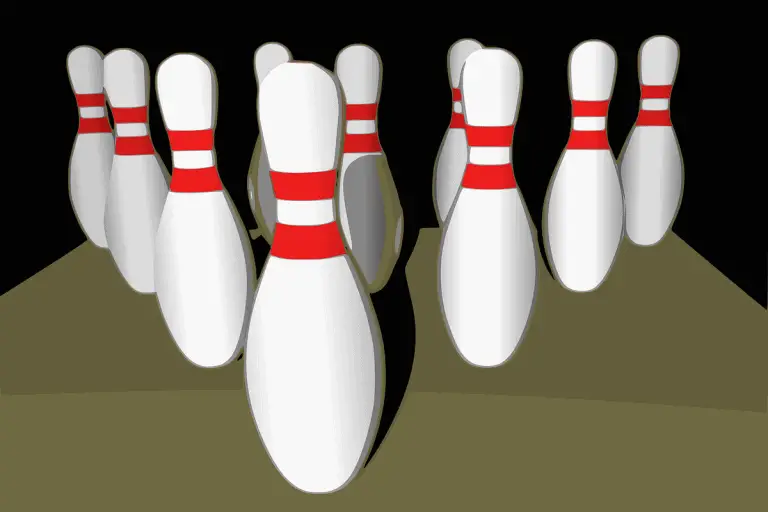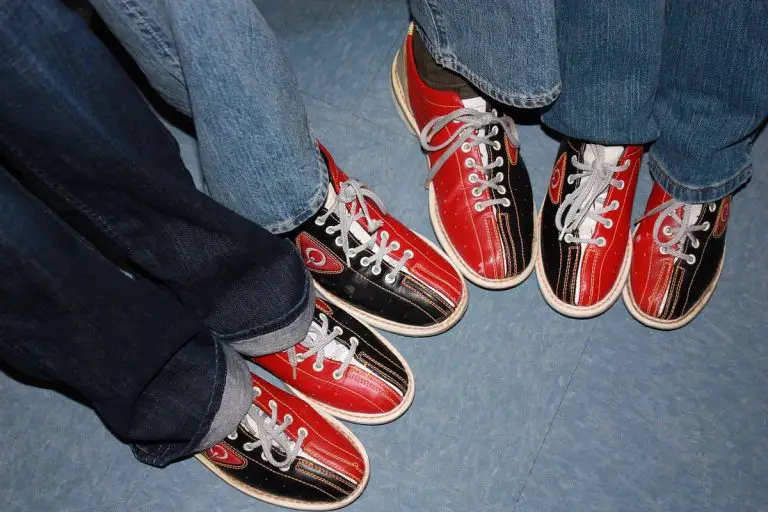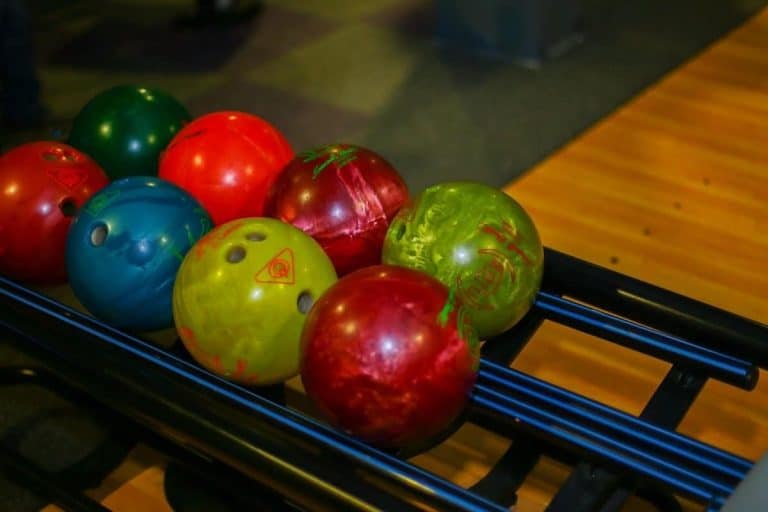Ever wonder why Bowling is called Bowling?
If you consider yourself a deep thinker or simply the curious type, you more often than not are more interested in knowing the why rather than the what. I completely share this sentiment and often find myself turning over every rock for truth and peace of mind!
As an avid enthusiast of Bowling, I cannot help but apply the same principles regarding its rules, techniques, and carefully designed tools that are all meant to enhance our experiences. In the same breath, I am also eager to discover precisely why Bowling is called Bowling! Let’s get the ball rolling, shall we?
The word “bowling” cannot be traced back to one person, thing, or organization. The first traces of Bowling were discovered through artifacts from ancient Egypt. It is also believed to have originated from Germany, specifically relating to the word “Kegel,” which referred to a religious ceremony for cleansing sins.
There are a plethora of other striking contributors that played a role in its development and popularity! To obtain a well-rounded answer, put on your funky bowling shoes, and let’s take a few crucial steps towards a more desirable outcome!
So Why Is Bowling Called Bowling?
Truth be told, the answer to this question involves a handful of different historical facts! Firstly, the earliest discovery of Bowling dates back to Ancient Egypt, whereby depictions on the wall of an Egyptian royal tomb, which was estimated to date back to 5200 BC, illustrate what looks remarkably like Bowling.
In addition to the discovery of bowling depictions found in the royal tomb were artifacts shaped like pins and balls found in an Egyptian child’s grave dating back to 3200 BC. These artifacts were discovered by a British anthropologist, Sir Flinders Petrie, in the 1930s. Considering the size and weight of some balls, and that some were covered in leather and porcelain, suggests that they needed to be rolled along the ground rather than thrown. Amongst these ball-shaped artifacts were alabaster rocks shaped like vases – thought to resemble modern-day skittles – found in Naqada, Egypt, in 1895.
It was estimated around 2000 years ago, a similar game evolved within the Roman Empire, specifically amongst the Roman officers, whereby throwing stone objects as close to other stone objects as possible emerged. It later developed and is known today as Italian Bocce (outdoor Bowling).
A German historian, William Pehle, argued that Bowling originated in Germany around 300 AD. It was due to a religious ceremony which started around the same time and required people to roll a rock into a club (called a “Kegel” in German, and pronounced “key-guh-l“), meaning “skittle” or “pin”), and if you could knock it over, you would be cleansed of your sins.
Lawn bowling played a significant role in the development and modernization of Bowling. Its humble beginnings started as early as the 12th century and were enjoyed by England to reduce the stresses of continuous war. It was also particularly famous in areas that had space restrictions.
Because it was an era of war, lawn bowling was banned by the King for being considered a distraction from what should instead be practiced – archery.
Who Brought Bowling To America?
Although there has been some debate over the years as to who first introduced Bowling to America, there is evidence that may help you clarify this mystery.
It is further substantiated by naming the “Bowling Green” park, the oldest in Manhattan. There are illustrationsof Bowling made by E.A. Abbey on the glass windows at the Bowling Green offices in New York. They depict Dutchmen bowling circa 1670 on Old King’s Arms Tavern on land now 2nd and Broadway in New York.
It was first mentioned in American literature by Washington Irving’s short story titled “Rip Van Winkle” in 1819. The first permanent American bowling location was for lawn bowling in New York’s Battery area. Although it has been transformed into a financial district since then, New Yorkers still call the small plot Bowling Green.
People Who Contributed To Bowling
One of the most influential and memorable gentlemen to have contributed to Bowling was Joseph Gentiluomo. At the current age of 98, he carries the title of World War II veteran, and he stands to be remembered as the individual who loves his country. Furthermore, he is also a brilliant mind who has made numerous, lasting contributions to the world of sports, Bowling and NASA.
Boasting an impressive 28 patents, Joseph’s knowledge of mechanical technology enabled him to figure out which materials would be essential in advancing the game of Bowling. Through his work with golf balls, he discovered that he could apply the same principles to alter the density of bowling balls.
By shifting the majority of its weight to the center of the ball, Joseph found it ideal for balancing the ball’s performance. This alteration allowed them to gather more energy when sliding across the oiled surface of the lane and proved to be more effective at striking into pins. Doing so drastically altered and improved the experience for both casual and competitive bowlers.
Still passionate at the age of 98, Joseph was invited last summer to ball at a grand reopening ceremony for Clifton Park’s Spare Time, which had been closed due to COVID regulations.
Speaking about bowling alleys, did you know that on January 1st, 1840, the very first known indoor-bowling lane, Knickerbocker Alleys, was opened in New York City? In 1846, these lanes were built as part of Roseland Cottage, the summer estate of Henry Bowen, who lived from 1831 – 1896 in Woodstock, Connecticut. It’s quite clear that Bowling can attribute much of its fame and glory to America! It was here that Bowling essentially grew from its infant and young adolescent life into the beautifully exciting and enjoyable game that we know today.
As for the largest bowling alley in the world currently? Guinness World Records has recognized Japan as the titleholder. You can find this bowling alley in Inazawa, titled “Inazawa Grand Bowl.” It features 116 consecutive Brunswick Bowling wooden lanes on a single floor. It has since been upgraded to Brunswick Pro Lane lanes in 2010.
When Did Bowling Become A Sport?
“Bowling is the ideal sport. It’s an hour of drinking beer, occasionally interrupted by six seconds of exercise.” – Internet Quotes.
By the 1800s, Bowling had become a popular and widely played activity in many states across America. It spread to New York, Ohio, and as far “west” as Illinois. Each state also had different ideas about the size, weight, and dimensions of bowling balls and what was considered fair and correct. These disagreements made it difficult for Bowling to be considered a competitive sport, and thus, Bowling strictly remained a club activity.
It wasn’t until a restaurateur named Joe Thum made an effort to bring together a representative from every regional bowling club to reach a consensus. On September 9th, 1895, at Beethoven Hall in New York City, the American Bowling Congress was established. It was the first important step that enabled national competitions to be hosted. In 1917, the Women’s International Bowling Congress followed suit and gave birth to the Women’s National Bowling Association.
As Bowling grew more competitive, bowlers became more anxious for something that would give them the competitive edge. This desire drove bowling technology into a new and exciting direction. Originally, bowling balls were made from a tough wood called “lignum vitae.” In 1905, the first rubber ball was manufactured and titled the “Evertrue.” Then followed the Mineralite Ball by Brunswick Corporation. These continuous improvements were a testament to the increasing popularity and competitiveness of Bowling.
Television finally brought Bowling to center stage in the 1950s, with NBC’s broadcast of “Championship Bowling” being its first-ever network coverage.
In What Country Is Bowling Popular?
The short answer is everywhere. It has grown exponentially over the last century, and it’s no surprise with its influx of bowlers from all ages, cultures, and backgrounds! It is estimated that Over 100 million people play bowling throughout 90 different countries. Enthusiasts have been petitioning for Bowling to be registered as an Olympic Sport. Although Bowling made the cut from a pool of 28 sports as potential candidates for the Olympics, the 2020 Olympic Committee instead opted for sports that appeal to youth and would not require building new facilities – to reduce cost.
That being said, bowlers aren’t giving up without a fight! Competitions for the world’s best players are hosted in Seoul and Barcelona and is held in Atlanta – all in the Olympic Village’s bowling center. In addition to this, Bowling is even included in the following championships, both regional and international: Caribbean Games, Bolivian Games, South East, and Far East Asian Games; Maccabiah Games; Masters Games, Solidarity Games, Ciss Games, Pan American Games; Asian Games; World Games; Commonwealth Games, Central and South American Games.
What Makes Bowling So Good?
The success of Bowling can be described in one simple word: accessibility.
People of all ages, cultural backgrounds, and nationalities can pick up Bowling without having prior experience. Perhaps the most intriguing feature that Bowling offers is its social aspects and sense of community which make it shine! It can be played casually or competitively and is excellent for that night out with “the boys” or “the girls.”
As a competitive sport, it has some of the lowest barriers to entry when compared to other sports like golf, hockey, or softball. Golfing equipment is often too expensive, and hockey requires equipment and an ice rink, while softball requires a large team to be played. On the other hand, Bowling is dependent on individual skill and therefore creates an even and fairer playing field.
Bowling leagues or clubs are still the social place of choice for many people, and they often have great facilities where kids can learn to play and become professionals in their own right. Some kids have taken this to the extreme, as with nine-year-old bowling prodigy Hannah Diem who became the youngest person in the United States to bowl a perfect game in 2013. She broke the record of 10 years, two months old set by Ohio’s Chaz Dennis, who rolled a perfect game in 2006.
Three History Bowling Alleys You Must See!
If you’re craving to satisfy your adventurous spirit, and Bowling happens to be your thing, you’re in luck! Some fantastic, old-school bowling alleys would be well worth a visit. Don’t forget to bring a couple of quarters for the ol’ jukebox and prepare for a trip down memory lane!
- Mahall’s: Lakewood, Ohio – This suburb was once known for its streetcars and dated storefronts. The 20-lane and hand-scoring venue was tidied in 2012. In addition to historic murals being discovered, so was their original tin lid. The vintage feel, coupled with its music bar and stage performances, has attracted personalities such as Talib Kweli and Wu-Tang Clan member GZA.
- Holler House: Milwaukee, Wisconsin – This one rolls in with some interesting facts: not only is it the oldest certified bowling lane in the country, but the same family has also owned it since 1908! If it’s old-school that you want, you’ll also be happy to know that even the pins are still set up by the neighborhood kids, and lanes offer no seating!
- Rock’ N Bowl: New Orleans, Louisiana – Despite struggles with natural disasters, the people of Louisiana stayed true to their traditions. In fact, Rock’ N Bowl expanded in 1988 to include a music venue, all the way opting to remain old-school. Of course, old-school is not complete without musical classics such as Creole Zydeco, which you can also listen to!
Which Bowling Ball Is Right For You?
Whether you’re a casual or competitive bowler, learning about some of the fundamental attributes of bowling balls can help to improve your game and your overall bowling experience! (If not, why not, right?) A few important attributes to consider are:
- Ball weight
- Ball material (known as cover stock)
- Customize your ball
- Left-handed or Right-handed
- Patience, Prosper, and Profit
The weight of your ball can drastically impact your performance, not to mention your enjoyment of the game. Some people argue that your ball should weigh approximately 10 percent of your body weight, yet many professionals prefer 15-pound and 16-pound balls. There may be varying bits of wisdom that all prove to be invaluable, yet it may not be right for you. Realistically, a ball that fits your hand comfortably and does not overburden your hands or wrists is the right fit.
Deciding on the material of your ball will affect the technique that you are attempting to execute. A smoother ball, for example, will be less likely to curve and change direction on the surface of a lane). The three main types of cover stocks are plastic, urethane, and reactive resin.
Plastic balls have a very smooth surface and also offer the least friction with the least hook potential. This kind of ball is an overall great start for any beginner wanting to try their hand at Bowling.
Urethane balls are a little more durable, and so they have increased friction. It also translates into it deflecting less and having better pin action. It is also considered a great next step up from plastic balls, with increased control and hook potential.
Reactive resin balls are less durable but carry a lot more friction, hook potential and pin action. Because they have much higher levels of friction, their sensitivity makes them much harder to control. In this case, they are not suggested for beginners and instead are much better suited for intermediate or advanced bowlers.
If you’re feeling a little overwhelmed by the differences between each ball, and you’re just looking for something more casual and straightforward, then you should consider a house ball. This is especially true if you’re only going to be bowling once or twice a week in your leisure time.
The two main attributes to consider when looking for a house ball are the sizes of the gripping holes and the distance between the thumb hole and finger holes. It is known as the span. There’s nothing else to it except to try picking up some bowling balls (watch your feet!) and seeing which feel most comfortable in your hand.
After spending some time with your house ball, you may want to branch off and try some new techniques like throwing hooks. In fact, you may have an impossible time getting your ball to execute correctly. The reality is, the functionality of a home ball is, as its name suggests – meant for home use – and does not possess the capabilities required for you to practice some of the more advanced techniques. If you are looking to become more serious, you will need to look at alternative bowling balls which have been specifically designed to meet your needs.
More importantly, novices looking to step up should avoid learning bad habits by trying to get a house ball to do the impossible rather than making a small investment and building a robust and lasting foundation for success. If you’re not a bowling ball expert, there is no reason not to consult those who are! Please seek advice from your local bowling shop professional so that they can help you get started on all the essentials.
Ensure that the bowling ball you’re purchasing is specifically suited for whether you’re right-handed or left-handed. There are distinct differences between them that cater to each individual, and they can make or break your bowling experience. Left-handed balls differ in that the position of the holes for your thumb and fingers are in a different place. The ring finger hole is behind the middle finger and is the last finger to leave the ball. The center weight is actually in front of the thumb hole and slightly to the left.
Most house balls are right-handed, and this, unfortunately, also means that you may have a hard time finding a ball as a left-handed bowler at a bowling alley that comfortably fits your hand.
Last but certainly not least, practice, practice, practice! Greatness is a little like a recruiter. If you show patience, determination, and perseverance – all great qualities that are sure to help you line up your strikes – then greatness will come knocking with jubilant anticipation before you even realize it!
Casual Bowling Vs. Competitive Bowling
“Straight down the middle, no hook, no fuss. Anything more, and this becomes figure skating” – Ron Swanson.
One of Bowling’s greatest strengths lies in its ability to appeal to both the casual and competitive crowd. As a casual player, it means having a great time with friends on weekends or having a few games after work with your work colleagues. The idea of bowling alleys become a social hub of community and interaction has evolved to such an extent that many bowling alleys now boast music bars and live performances to attract socialites.
In its own right, bowling alleys bring with them their own 50’s and 60’s charm, and although they look a little different on the outside, the same heart still beats passionately on the inside!
On the topic of social aspects, Bowling is also great for taking that special someone on a first date! The environment itself doesn’t carry any expectations, and the atmosphere is both relaxing and encourages fun chats. Furthermore, a healthy bit of friendly competition always made for the most interesting relationships, don’t you think? (Or perhaps you prefer “keep your friends close, and your enemies closer”)?
However, some folks thrive on competition and love the challenge and sense of accomplishment that goes hand-in-hand. Competitive Bowling is very much alive today, with ages from 9 – 90 battling it out. Competitive Bowling requires that you have the best of the best equipment to gain even the slightest edge over the competition. In light of this, from 2014 to 2018, manufacturers took it upon themselves to release over 500 new bowling balls! Organizations like, for example, United States Bowling Congress (USBC) is the most prominent and influential in the United States. In 2019, it was recorded to have 1.3 million members and is responsible for much of the advancements in sports.
Another important competitive organization to keep an eye on is The Professional Bowlers Association (PBA). They are the premier sanctioning body for serious bowlers in the United States. Professional bowlers from all around the world are members. Founded in 1958, it currently has over 3000 members from 50 different countries. Competitions are held annually. There were 30 PBA tournaments, ten open events, and four internationals held for the year 2019.
Conclusion
After careful consideration, our evidence suggests that Bowling as an entity is an amalgamation of centuries of ideas, cultures, and events that transformed it into what we know today. Despite its evolution over the years, it remains a beloved and thoroughly enjoyed pastime by millions of people. Whether you’re looking for a great night out, taking that special someone somewhere nice, or seriously considering playing as a professional – bowling has it all for everyone!





